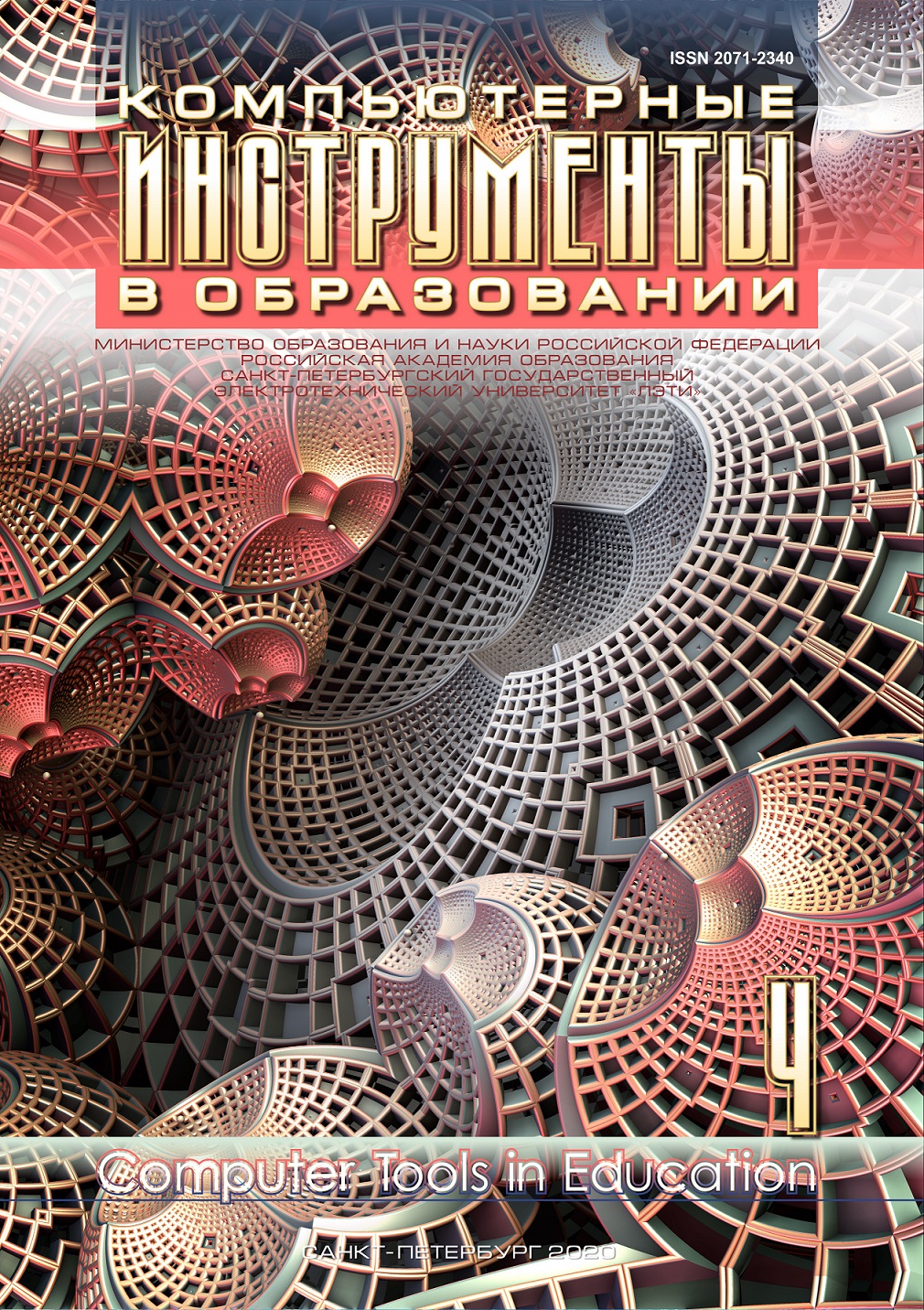Visualization of Functional Dependences in Dynamic Geometry Systems
Abstract
We describe various methods of visualization of functions and geometric transformations encountered in school mathematics by means of the dynamic geometry systems such as MathKit, The Geometer’s Sketchpad, and GeoGebra and their usage scenarios in the spirit of modern trends in education. Novel opportunities for teaching and learning functions and their properties based on computer models are discussed. The focus is on specifically computerized interpretations of functions, in particular, the so-called dynagraphs, in which parallel axes of arguments and values are used, and the correspondence given by the function is found when the argument-point moves along its axis.
References
V. N. Dubrovskii and S. N. Pozdniakov, “Dinamicheskaya geometriya v shkole. Rabota s grafikami funktsii sredstvami dinamicheskoi geometrii” [Dynamic geometry at school. Working with graphs of functions using dynamic geometry], Komp’yuternye instrumenty v shkole, no. 5, pp. 32–45, 2008 (in Russian).
V. Vavilov, “Setchatye nomogrammy” [Grid Nomograms], Kvant, no. 9, pp. 22–29, 1978 (in Russian).
1C Company, V. N. Dubrovskii, V. A. Bulychev et al. “How to make a mathematical discovery,” in obr.1c.ru. [Online] (in Russian). Available: https://obr.1c.ru/mathkit/lessons5.html
M. Flashman, “Mapping Diagrams and a New Visualization of Complex Functions with GeoGebra,” in Proc. Bridges 2019 Conference, pp. 295–302, 2019.
T. Brieske, “Mapping Diagrams, Continuous Functions and Derivatives,” Two-Year College Mathematics Journal, vol. 9, no. 2, pp. 67–72, 1978; doi: 10.2307/3026603
P. Goldenberg, P. Lewis, and J. O’Keefe, “Dynamic representation and the development of a process understanding of function,” G. Harel and E. Dubinsky, eds., in The Concept of Function: Aspects of epistemology and pedagogy, Washington: Mathematical Assn of Amer, 1992, pp. 235–260.
N. Sinclair, L. Healy, and C.O.R. Sales, “Time for telling stories: narrative thinking with dynamic geometry,” ZDM Mathematics Education, vol. 41, pp. 441–452, 2009; doi: 10.1007/s11858-009-0180-x
V. N. Dubrovskii, V. A. Bulychev and N. A. Lebedeva, Mathematics, grades 5-11, Collection of interactive models, [Soft], iss. 8.0, 1C:Publishing, 2019. [Online] (in Russian). Available: https://obr.1c.ru/mathkit/collection/models/[mk_m8]_3-01.html
A. V. Pantuev, “EDUCATIONAL materials and links,” in horohoro.r. [Online] (in Russian). Available: https://horohoro.ru)
A. I. Sgibnev, “Dinographics in the course of algebra 7-10 grades,” Mathematics in School, (in print).
M. Bridger, “Dynamic Function Visualization,” The College Mathematics Journal, vol. 27, no. 5, pp. 361–369, 1996.
R. Chijner, “Visualizing Functions of Two Variables” in GeoGebra Book. [Online]. Available: http://www.geogebra.org/m/qjvkbXxP
N. B. Vasil’ev and V. L. Gutenmakher, Pryamye i krivye [Straight lines and curves], Moscow: MCCME, 2016 (in Russian).
S. Steketee and D. Scher, “Connecting functions in geometry and algebra,” Mathematics Teacher, vol. 109, no. 6, pp. 448–455, 2016; doi: 10.5951/mathteacher.109.6.0448

This work is licensed under a Creative Commons Attribution 4.0 International License.







